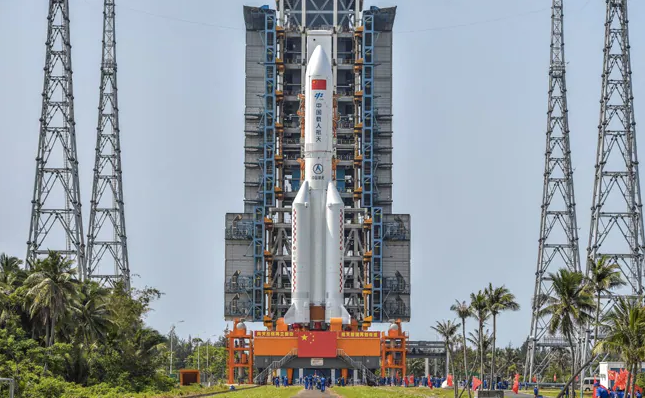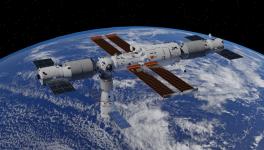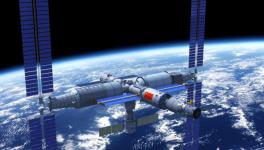Chinese Astronauts Enter Lab Module in Orbit First Time After it Docks With Space Station

Representational Image. Image Courtesy: NDTV
Beijing: Three Chinese astronauts aboard the country’s space station, currently under construction, successfully entered the lab module in orbit for the first time on Monday, a day after the space laboratory was launched, according to the China Manned Space Agency.
China launched its space laboratory called Wentian on Sunday, sending the country's largest-ever spacecraft into Earth's orbit to become part of the space station named Tiangong which is currently under construction.
The Wentian module docked with the front port of the space station in the early hours of Monday after it entered the planned orbit.
It is the first time that China's two 20-tonne-level spacecraft conducted rendezvous and docking in orbit, and also the first time that space rendezvous and docking were carried out during the astronauts' in-orbit stay in the space station, the China Manned Space Agency (CMSA) told official media.
After the docking, the three astronauts who were building the space station entered the lab, Xinhua news agency reported.
It was the first time the Chinese astronauts had entered the lab module in orbit.
The astronauts will conduct in-orbit work such as the attitude control of the combination of the space station, small mechanical arm crawling and the test of the complex of big and small arms.
They will also use the airlock cabin and the small mechanical arm of Wentian to carry out extravehicular activities, the state-run Xinhua news agency reported.
In the coming weeks, Wentian will be repositioned by a robot apparatus from the forward docking port to a lateral port, where it will remain and be prepared for long-term operations, mission planners said.
The new lab module will function both as a backup of the core module and as a powerful scientific experiment platform, state-run China Daily reported.
The lab, which is the size of a subway car, is the heaviest single-cabin active spacecraft in orbit in the world, according to Liu Gang, deputy chief designer of China's manned space program's space station system.
The Wentian module consists of a work cabin, an airlock cabin and a resource cabin, the Xinhua report said.
The construction of China's Tiangong space station is expected to be completed this year.
It will then evolve from a single-module structure into a national space laboratory with three modules -- the core module called Tianhe, and lab modules named Wentian and Mengtian.
The Tianhe module was launched in April 2021, and the Mengtian module is set to be launched in October this year.
Later, the Wentian module will rendezvous and dock with the combination of the space station, according to the scheduled procedures.
The three astronauts who were sent into orbit on June 5 will help assemble the modules in their six-month space mission.
During their stay in orbit, they will also witness the Tianzhou-5 cargo craft and Shenzhou-15 crewed spaceship dock with the core module.
Then, they will live and work with the next batch of astronauts before returning to Earth.
Once ready, China's low-flying space station will be the only country to own a space station. The International Space Station (ISS) of Russia is a collaborative project of several countries.
China Space Station (CSS) is also expected to be a competitor to the ISS built by Russia.
Observers say CSS may become the sole space station to remain in orbit once the ISS retires in the coming years.
The significant feature of China's under-construction space station is its two robotic arms, especially the long one over which the US has previously expressed concern over its ability to grab objects including satellites from space.
The 10-meter-long arm earlier successfully grabbed and moved a 20-tonne Tianzhou-2 cargo ship in a test, according to China Manned Space Engineering Office.
Get the latest reports & analysis with people's perspective on Protests, movements & deep analytical videos, discussions of the current affairs in your Telegram app. Subscribe to NewsClick's Telegram channel & get Real-Time updates on stories, as they get published on our website.






















